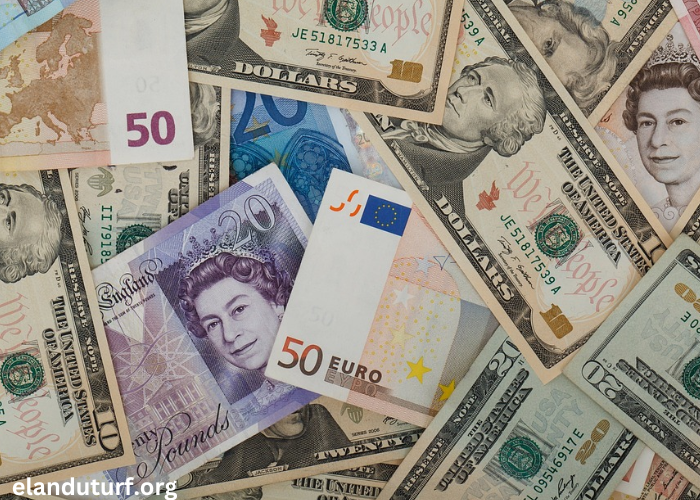In the world of international finance, currency conversion plays a crucial role in facilitating trade, investment, and economic stability. For many African nations using the CFA franc (XOF or XAF), understanding how the US dollar (USD) interacts with their local currency is essential for both personal and business financial planning. This article delves into the intricacies of “Dollars en CFA,” exploring how the conversion between these two currencies works, its impact on African economies, and the broader implications for individuals and businesses.
The CFA Franc and Its Role in African Economies
The CFA franc is used by 14 countries in West and Central Africa, divided into two zones: the West African Economic and Monetary Union (WAEMU) and the Central African Economic and Monetary Community (CEMAC). The currency, which is pegged to the euro, is an important tool for economic stability in these regions. The West African CFA franc (XOF) and the Central African CFA franc (XAF) are both pegged to the euro at a fixed rate, which has helped maintain relatively stable exchange rates with other major currencies, including the US dollar.
Historical Context and Currency Peg
The CFA franc was introduced in 1945 as a replacement for the French colonial currency. It was designed to provide monetary stability to the countries that were transitioning from colonial rule. Initially pegged to the French franc, the currency’s peg was later adjusted to the euro when it was introduced. This arrangement has provided stability and predictability in exchange rates, which is crucial for trade and investment in the region.
The peg to the euro helps shield CFA franc countries from the volatility often seen in emerging markets. However, it also means that the value of the CFA franc is influenced by the euro’s performance against other major currencies, including the US dollar. As a result, fluctuations in the USD can impact the CFA franc indirectly through changes in the euro exchange rate.
Conversion of Dollars to CFA Francs
Converting US dollars to CFA francs involves understanding both the direct exchange rate between the USD and the euro, as well as the pegged rate between the euro and the CFA franc. The conversion process is straightforward, but the exchange rates can fluctuate based on global economic conditions, geopolitical events, and changes in monetary policy.
Exchange Rate Dynamics
The exchange rate between the US dollar and the euro fluctuates due to various factors, including interest rate changes by central banks, economic data releases, and market sentiment. Since the CFA franc is pegged to the euro, the changes in the USD/EUR exchange rate will have a proportional effect on the USD/XOF and USD/XAF exchange rates.
For instance, if the euro strengthens against the US dollar, the value of the CFA franc will also appreciate relative to the dollar. Conversely, if the euro weakens, the CFA franc will depreciate. This relationship means that businesses and individuals dealing with both currencies need to monitor global economic conditions and exchange rate movements closely.
Conversion Rates and Practical Applications
To convert US dollars to CFA francs, one can use the following approach:
- Determine the current USD/EUR exchange rate.
- Find the current EUR/XOF or EUR/XAF exchange rate.
- Multiply the USD amount by the USD/EUR rate to get the amount in euros.
- Convert the euros to CFA francs using the EUR/XOF or EUR/XAF rate.
For example, if 1 USD equals 0.85 EUR and 1 EUR equals 655.957 XOF, then 1 USD equals approximately 558.56 XOF. Accurate and up-to-date exchange rates can be obtained from financial news sources, currency converters, or financial institutions.
Impact of USD/CFA Franc Exchange Rates on African Economies
The exchange rate between the US dollar and the CFA franc has significant implications for the economies of countries using the CFA franc. These implications are particularly important in sectors such as trade, investment, and inflation.
Trade and Investment
Many CFA franc countries rely on imports of goods and services priced in US dollars, such as oil, machinery, and technology. A stronger US dollar can increase the cost of these imports, leading to higher expenses for businesses and consumers. This can impact inflation and economic growth, particularly if the countries are heavily reliant on imported goods.
Conversely, a weaker US dollar can reduce the cost of imports and potentially boost economic activity by making foreign goods and services more affordable. For export-oriented businesses, a stronger dollar can also make their products more competitive in global markets, as their goods become cheaper for foreign buyers.
Inflation and Economic Stability
Exchange rate fluctuations can affect inflation in CFA franc countries. A stronger dollar, leading to higher import costs, can contribute to inflationary pressures. This, in turn, can erode purchasing power and impact the cost of living for individuals.
The pegged exchange rate system aims to provide stability, but external shocks and global economic changes can still influence inflation. Effective monetary policy and economic management are crucial in mitigating the impact of exchange rate fluctuations on inflation and maintaining overall economic stability.
Financial Planning and Risk Management
For businesses and individuals engaged in cross-border transactions, understanding and managing currency risk is essential. Companies that import or export goods must account for potential fluctuations in exchange rates to avoid financial losses. Hedging strategies, such as forward contracts and options, can help manage currency risk and lock in favorable rates.
For individuals, currency conversion impacts travel budgets, remittances, and investment decisions. Staying informed about exchange rate trends and using financial tools to manage currency risk can help individuals make more informed financial decisions.
The Future of USD and CFA Franc Exchange Rates
The future of the USD and CFA franc exchange rates will be influenced by several factors, including global economic conditions, changes in monetary policy, and geopolitical events.
Global Economic Trends
Global economic trends, such as shifts in economic growth, trade policies, and investment flows, will continue to affect exchange rates. For instance, changes in US monetary policy or economic performance can impact the USD/EUR exchange rate, which in turn affects the CFA franc.
Policy Changes and Economic Reforms
Policy changes within CFA franc countries and the broader eurozone can also impact exchange rates. Economic reforms, changes in fiscal policy, and adjustments to monetary policy can influence the stability and value of the CFA franc relative to the US dollar.
Technological and Market Developments
Advancements in financial technology and changes in market dynamics may also play a role in shaping future exchange rates. Innovations in currency trading, financial instruments, and market access can affect how currencies interact and influence exchange rate behavior.
Conclusion
“Dollars en CFA” encapsulates a crucial aspect of international finance for countries using the CFA franc. Understanding the conversion between US dollars and CFA francs, along with its broader economic implications, is essential for effective financial planning and decision-making.
The relationship between the USD and CFA franc, influenced by exchange rate dynamics, global economic trends, and local economic conditions, has far-reaching effects on trade, investment, and inflation. By staying informed about exchange rates and leveraging financial tools, businesses and individuals can better navigate the complexities of currency conversion and enhance their financial outcomes.
In summary, the interplay between the US dollar and the CFA franc highlights the importance of currency understanding in a globalized economy. As economic conditions evolve and currency markets fluctuate, maintaining a keen awareness of exchange rate trends will continue to be a key factor in financial success and stability for CFA franc countries.







